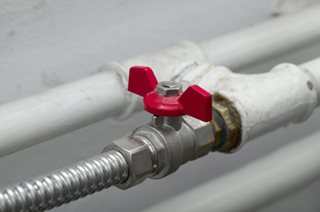For householders looking to make a long term investment in harnessing geothermal power for their domestic use, perhaps the most popular method is to look into installing a geothermal loop system. However as appealing as 'free' energy may appear, it's crucial that the installer pays close attention to how they install their apparatus, and is aware of the regulations in place.
As
geothermal technology has become more efficient and prominent on the market, it's key to ensure that a quality contractor is hired to carry out the installation. A qualified - and certified - expert ought to protect against the risk of mistakes that can work out to be very expensive to rectify, and even for the most ambitious homeowner it's important to at the very least discuss plans with a consultant.
A good installer should be able to install a fully efficient geothermal loop within a couple of days, usually split between excavating soil, installing the loops and then landscaping the earth back over. Once more, a quality contractor will ensure that the appropriate depth is reached - with the Canadian Standards Association (Standard 448) suggesting a minimum of four feet - and ideally a little more to reach maximum efficiency. Expertise, and the right equipment can pay dividends here as frequently heavy, rocky earth will need powerful lifting machinery, that is far better to have contacted for rather than discover after a couple of feet that expensive plant is going to need to be hired.
Thermal stability generally increases with depth. That needs to be carefully measured in order to ensure that the works will comply with local regulations. A number of provinces insist upon the use of trench scaffolding for depths over six feet, important to ensure a stable excavation, but a style of digging that will invariably add considerably to the overall expense of the project. The reasons for this are primarily founded upon site safety, but also that any project involving extensive excavation can have a destabilizing influence over nearby properties and constructions that may not be apparent at the first instance but can have a gradual destabilizing effect over time.
For those considering a sheer, vertical installation of their
geothermal pipe, the regulations are less porous but care still needs to be had. The average vertical borehole will be up to 200 feet in depth, an advantage for those only considering installing a couple of units however given their depth they must be installed further apart than shallower alternatives. Trenches are usually spaced at around 10 feet apart to maximize efficiency, whereas boreholes, depending on depth, will require up to 15.
Taking care when undertaking these projects should ensure that a fine geothermal supply can be sourced from well installed trenches or boreholes, however it's equally crucial to ensure that the pipes will be well below the realistic depth that frost will be able to penetrate; yet also shallow enough to ensure construction delivers fair value. Installing geothermal pipes is essentially a careful balancing act, and for a project with great long term benefits it pays to consult before construction.
